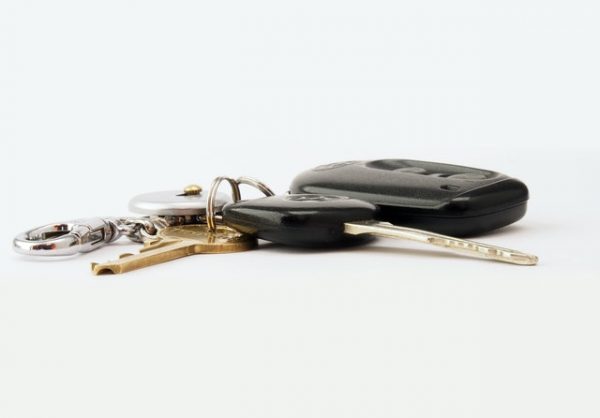If you are a car owner, are you aware of the importance of correct tire inflation? Don’t be like other car owners who ignore the effects of improper tire inflation. In this article, I’ll talk about the symptoms of over-inflated tires and their detrimental effects on tires.
There are four typical signs of overinflated tires:
Excessive wear on center treads.
bouncy ride
Lack or bad traction
Strange behavior of the car.
Defective car (safety) systems
Over-inflating your tires has deleterious effects not only on your tires but also on the behavior of your car. In addition to damaging your tires, it could also compromise your safety on the road. You should not take for granted the tire inflation recommended by the car and tire manufacturers for your tires.
Read on to learn more about the symptoms of overinflated tires, their effects on your tires and car, and proper inflation practices to follow.
Also, we hope you find the links here helpful. We may get a commission if you buy something through a link on this page, so thanks.
Symptoms of overinflated tires
Five typical symptoms will show you if your tires are overinflated:
Excessive wear on its central tread bands.
bouncy ride
Lack or bad traction
Strange car behavior
Faulty security systems
If your tires are over inflated it will distort their shape. Your tires will also have less traction, and the center tread wear rate will increase. If your tires wear out quickly, you’ll spend more than necessary on tire replacements.
Overinflated tires are like bouncing balls. Its sidewalls are too stiff, and the stiffness of its treads can cause vibrations while turning fast. They will also have less traction. Also, over-inflated tires are susceptible to blowouts and damage.
There is a safe range of tire pressure that you should put in your tires. On average, they should not be more than 50 psi and not less than 20 psi. Going above or below this range will expose your tires to severe damage. Also, the front tires and tires may need different pressures.
So what is the ideal tire pressure for most passenger tires? The optimum pressure is around 40 psi. However, for small cars, the recommended pressure is less than 35 psi. For sports cars, the recommended pressure is 32 to 40 psi.
Symptoms of overinflated tires
It is not enough to know the symptoms of overinflated tires. You should also have a detailed understanding of these symptoms:
1. Too much wear on center risers
The legal tread depth for tires should be approximately 1.6mm. This depth is measured throughout the tire using the penny test. If you check the treads on your tires regularly, you won’t fail to notice that the center treads wear faster than the inner and outer sides.
The center tread of the tire is the part that hits the road the most. In that case, you will understand why it tends to wear out more.
As there are legal requirements for new tire tread depth, there is also a law that requires car owners not to use tires with less than or less than legal tread depths. So if your tires are below the legal requirements, you are already driving illegally.
2. Inflatable ride
If your tires are over inflated, your ride will be uncomfortable most of the time. Your tires will bounce your car whenever it comes across minor road defects. Naturally, your journey will be very uncomfortable.
The main reason for this is that your tires are too stiff. They’re less flexible, so they can’t adjust when you hit a bump. Also, they cannot absorb shock compared to properly inflated tires.
3. Bad or lack of traction
Poor or lack of traction is one of the first things you’ll notice if your tires are over inflated. Typically, your tires should be able to provide enough grip to the pavement you drive on. However, the point of contact between the road and the tires becomes smaller if they are overinflated.
This happens because the tires are bulging in the center of the tread. When you turn corners, you will feel your car want to slide a bit.
You may also feel your brakes slip and notice your stopping distance getting longer. It is essential to check the tire pressure regularly if you do not want to go through this.
4. Strange car behavior
If you notice that your car is behaving strangely and it’s not how it used to be, one reason is overinflated tires. As a good driver, you need to know how your car normally works. You also need to experience the optimal way it drives while on the road.
You’ll easily notice if there’s any change in the way you normally drive the road, blemishes and all. Your car usually works when its components, including the tires, are in the correct configuration. As far as your tires are concerned, they need to be at the correct pressure.
So if your tires do not have the correct PSI, you will notice the resulting change in their normal behavior. In other words, it will react differently to the usual things it encounters on the road.
5. Faulty car systems
Some of your car’s safety features will not work if your tires are overinflated. These systems are mainly related to the braking system of your car, since your tires are closely linked. Systems that will not work include the anti-lock braking system (ABS) and the electronic stability program (ESP).
Unfortunately for overinflated tires, these two safety features have become standard on most modern cars. These systems work properly if your tires have enough grip on the pavement while turning. So if your tires are over inflated, how can your grip be adequate?
Why is it important to have the correct tire pressure?
Don’t be like other drivers who don’t know how important it is to check your tires before you turn your ignition keys on. Keep in mind that your tires are also crucial to get from point A to point B without any problem.
Usually, the pressure in the front tires is higher than that in the rear tires. The front tires bear most of the weight of your car as you drive it. It would be better if you understood that the load capacity of a tire depends on the pressure inside it.
The point is that you should check your tire pressure before you drive to your destination every time you start your day. It’s dangerous not to because you don’t know precisely what the road holds for the day.
Every time you drive your car, your four tires must provide adequate grip on the road for your safety.
on the road for your safety.
What are the negative effects of over-inflated tires?
There are immediate detrimental effects that you can experience if your tires are over inflated. Here are some of them:
1. Blowouts
Your chances of getting a flat tire increase if you overinflate them. Therefore, do not risk lives by overinflating your tires. Because? If a tire blows out, you will not be able to control your vehicle.
From May to October is the country’s explosion season. It is because, during these months, the outside temperatures are increasing. Therefore, those who do not take care of their tires and who take long trips during these months are likely to experience flat tires.
2. Road damage
As I mentioned, over-inflated tires cannot flex when running on rough, warped road surfaces.
Unlike properly inflated tires, overinflated tires cannot flex their rubber materials or bend around potholes and cracks in pavement. This will ruin the tires as well as give an uncomfortable ride quality.
3. Uneven tire wear
The wear on tires that are over inflated is also often uneven. This happens because the center tread of the tires receives the most abrasion from the road. The center tread grips the road surface more than the outer treads of the tire.
In other words, more abrasions occur in the central part of the tire compared to the scratches that occur in the two outer side parts. The natural consequence is uneven tire wear. You need to be prepared for more frequent tire replacements, which can hurt your pocketbook.
4. Compromised Road Safety
The most serious effect of overinflated tires is that your safety on the road is compromised. Overinflated tires can cause your car’s safety features such as the braking system, traction control, and others to not work properly, if at all.
This security system is a must every time you drive your vehicle. Driving your car with these systems not fully working will increase your risk of traffic accidents. You don’t want the lives of your passengers to be in danger, do you?
How to avoid over-inflating your tires?
If your car does not have a Tire Pressure Monitoring System (TPMS), you can purchase an aftermarket TPMS that works similarly. This way, you can avoid over-inflating your tires.
Click here to view this TPMS on the internet.
Another way is to buy a simple tire pressure gauge and check your tires every two weeks of driving. There are tire gauges that are very inexpensive but can still do the magic of indicating the pressure inside a tire.
Click here to view this tire gauge on the internet.
In conclusion
There are five typical symptoms of overinflated tires:
Too much wear on the center treads
Bumpy and uncomfortable ride
Reduced or total lack of traction or very bad
Strange car behavior
Defective behavior of the car in some of its security systems
Overinflating your tires will not only damage them, but it can also affect the way your car operates. Some of your car’s safety systems will be severely affected, which may compromise your road safety.
Do not take for granted the inflation pressure recommended by car and tire manufacturers for their tires.




